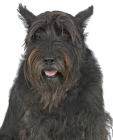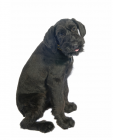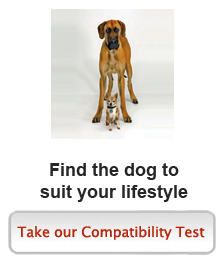Giant Schnauzer
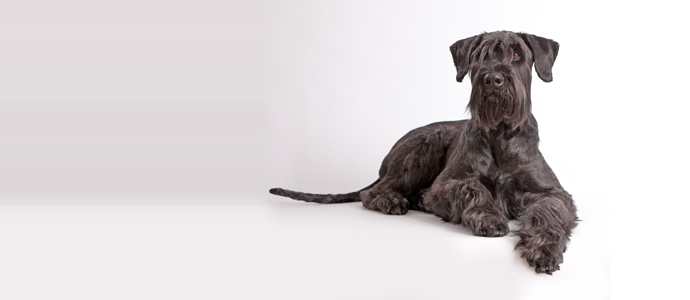
In my own words
“I’m larger than life but I’ve got a big heart to go with it!”
Oh did you see that? I think it was a squirrel. I love squirrels! I just love chasing little furry creatures, it’s so much fun. Let me show you how I can nearly catch them, I can run pretty fast you know. I have tons of energy so I need to burn it off somehow, right? I do love a game of rough and tumble, maybe it’s not such a good idea to play those kind of games with children though!
My kind is seen as a bigger and bolder version of the Standard Schnauzer but in giant size. How cool is that? I may be pretty big but I’l still cuddly and I love my family. I make a great guard dog you know. Did you know my kind are often used as police and therapy dogs, isn’t that great? Anyway, I must dash, I think I saw another squirrel...
My ideal owner(s)
Families with older children
Experienced dog handlers
Outdoorsy types
What they say about me
Handsome
Protective
High energy
Devoted
Big and bold
Playful
Please read on, to find out more about me, and whether I will be someone you can be happy with for the next 12 years, or even longer!
Is this Giant Schnauzer for you?
Test your knowledge about the Giant Schnauzer
Information essential about the Giant Schnauzer
Kennel Club Group:
Working
Size:
Large: Weight Male 100 lb (45.5 kg) Female 90 lb (41 kg)
Height Male 25.5 – 27.5” (65 – 70 cm) Female 23.5 – 25.5” (60 – 65 cm)
Popularity:
Despite their relative rarity in the United States, they are steadily gaining in popularity.
Breed History:
Unlike the Miniature Schnauzer and Standard Schnauzer which were bred to be ratters and watchdogs, the Giant Schnauzer was intended for tasks such as hauling, herding and even barroom bouncing. The breed was created by crossing Standard Schnauzers with bigger dogs such as the Great Dane.
The breed originated from southern Germany and the nearby regions of Switzerland and France. They have been represented in art and sculptures from the 1400s and were used as cattle herders during this time until railroads were developed.
In the 19th century the breed became popular working as guard dogs and they worked during the world wars as police and war dogs which resulted in them almost being wiped out. The Giant Schnauzer was first shown and appeared in American in 1909. The breed has never been extremely popular but they have many endearing qualities.
Character:
The Giant Schnauzer makes a very attentive companion. They are very close to their owners, staying nearby and sometimes watching their every move. They love to be involved in every household activity and are very affectionate and attached. They make superb watchdogs and their commanding presence combined with intense family loyalty makes them formidable household guards. They are able to easily distinguish between friend and foe but they will bark only if they sense a threat, rather than random or excessive barking.
Temperament:
This breed is powerful, large yet elegant. They are capable of enduring harsh weather as they are extremely hardy and also independent and courageous. They are proud and determined and make a loyal and trustworthy family pet. This breed is very loving, protective and responsible. They thrive on human companionship and do not do well if left alone for long periods of time. They are lively and active and can be stubborn and wilful so they require a firm hand when training. They can become very territorial. They get on well with other dogs, household pets and children and are ideally suited to an active family. They are quick to alert their family of strangers, making excellent guard and watchdogs. They require early socialisation and train and are not ideal dogs for a novice owner.
Conformation:
This breed is essentially a larger, stronger version of the Standard Schnauzer. They have large, square built frames covered in dense, wiry coats. Their long heads have distinctive bushy moustaches, beards and eyebrows, not to mention deeply set eyes, powerful muzzles and V-shaped ears that point up and forward. The Giant has a rectangular head and the body length equals the height at the withers.The head should be strong, being flat between the ears. They should have a powerful blunt muzzle and a strong jaw with a perfect scissor bite. Their tails, sometimes docked, are carried high. The neck should be relatively long, strong and slightly arched. The chest should be deep and broad, and the topline strong and straight, slightly higher at the shoulder than the back end. The body length should be the same as the height at the withers. The front legs should appear straight when viewed from all angles, the back legs should be well muscled. The feet should be compact, round and short. Overall, Giant Schnauzers have a sturdy, commanding and lively look.
Coat:
This breed has a double coat. The outer coat should be harsh and wiry with a dense, soft undercoat. The hair is longer over the eyes and on the muzzle to form bushy eyebrows and a distinctive beard. The hair on the legs is longer than the body coat.
Colour:
The coat comes in solid black, white or salt and pepper. White Schnauzers are rarely seen in the show ring.
Training:
This breed are clever and trainable but have strong hunting instincts. They can become easily excited by small creatures such as squirrels, cats or birds. Ensure to walk them on the lead and maintain a firm but encouraging hand when training. It is essential to train and socialise this breed from a young age. They are a dominant breed and require an experienced and dominant owner. They respond to respect, consistency, firmness, fairness, positive reinforcement and reward. They excel in agility, obedience, schutzhound and are often used as therapy and police dogs.
Care:
The Giant Schnauzer requires weekly brushing and combing to keep the coat free of mats and tangles. The hair around the eyes and ears needs to be kept trimmed and their whiskers should be cleaned after meals. Bathing and dry shampooing should be done only when necessary. This breed sheds little to no hair
Health:
The lifespan of a healthy individual is between 10 and 12 years, which is normal for a dog of this size. However, some live for as long as 15 years. If you buy from a reputable, responsible breeder, health problems should not occur. This breed suffers from hip dysplasia, eye problems, joint problems and bone disease. They are prone to cancer, bloat and epilepsy.
Exercise:
This breed needs a lot of outdoor exercise. Vigorous daily walks or long jogs will help them stay physically and mentally active. When bored or ignored this breed can become agitated. They love copious amounts of exercise and thrive on having something to do, thoroughly enjoying family play sessions. They can play rough so it is wise to supervise play.
You may also like:
If you like Giant Schnauzers, you may be interested in breeds of the same size »
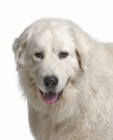


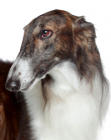
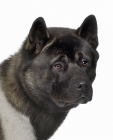
If you like Giant Schnauzers, you may like other breeds with similar characteristics »
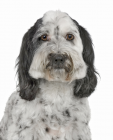
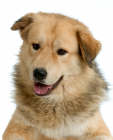
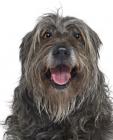
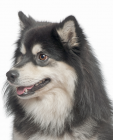

If you like Giant Schnauzers, you may be interested in these other working dogs »
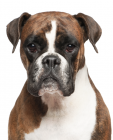
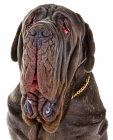
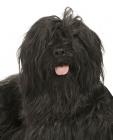
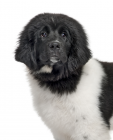
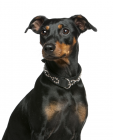
Advice on choosing your breed »
Find an animal shelter or rescue home where a Giant Schnauzer is waiting for a new home »
The following grid gives a fast track review which covers all breeds. You can apply it to help you decide if a Giant Schnauzer is suitable for you, the environment where you live, your personality and your lifestyle. On the grid, 1= strongly disagree, and 5= strongly agree. For example, if you are looking for a dog that likes running and hiking, look down the list under Activities, and you will see that Giant Schnauzers love jogging, scoring 5. If you want a playful companion, look down the same list, and you will see that Schnauzers love to fetch and hunt, and score 5. You might like to save or print off this section and keep it for reference while you check some other breeds before making your final choice.
This breed is not recommended for apartment dwelling. Giant Schnauzers do best with plenty of acreage where they are able to run freely. The Giant Schnauzer does best in a home with children over the age of 14 who are considerate and well behaved.
They are not recommended for the novice dog owner, two-career family, or a sedentary owner. This bold breed is intense and complex and requires an owner who completely understands them. They are highly intelligent, imposing, and extremely protective of their family and territory. They make excellent guard dogs. They typically do not get along with other household pets.
Be the first to rate this breed »
|
*PLEASE NOTE: All our breed profiles are general, and all dogs are individuals. Always talk to the breeders and meet the owners you are buying from. Try to meet the dog and its parents if it is a puppy in their home environment.








